46 have author last names that start with D have author last names that start with D
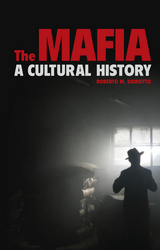
Dainotto traces the development of the mafia from its rural beginnings in Western Sicily to its growth into a global crime organization alongside a parallel examination of its evolution in music, print, and on the big screen. He probes the tension between the real mafia—its violent, often brutal reality—and how we imagine it to be: a mythical potpourri of codes of honor, family values, and chivalry. But rather than dismiss our collective imagining of the mafia as a complete fiction, Dainotto instead sets out to understand what needs and desires or material and psychic longing our fantasies about the mafia—the best kind of the bad life—are meant to satisfy.
Exploring the rich array of films, books, television programs, music, and even video games portraying and inspired by the mafia, this book offers not only a social, economic, and political history of one of the most iconic underground cultures, but a new way of understanding our enduring fascination with the complex society that lurks behind the sinister Omertà of the family business.


Take a slice of bread. It’s perfectly okay in and of itself. Maybe it has a nice, crisp crust or the scent of sourdough. But really, it’s kind of boring. Now melt some cheese on it—a sharp Vermont cheddar or a flavorful Swiss Gruyere. Mmm, delicious. Cheese—it’s the staple food, the accessory that makes everything better, from the hamburger to the ordinary sandwich to a bowl of macaroni. Despite its many uses and variations, there has never before been a global history of cheese, but here at last is a succinct, authoritative account, revealing how cheese was invented and where, when, and even why.
In bite-sized chapters well-known food historian Andrew Dalby tells the true and
savory story of cheese, from its prehistoric invention to the moment of its modern rebirth. Here you will find the most ancient cheese appellations, the first written description of the cheese-making process, a list of the luxury cheeses of classical Rome, the medieval rule-of-thumb for identifying good cheese, and even the story of how loyal cheese lover Samuel Pepys saved his parmesan from the great Fire of London. Dalby reveals that cheese is one of the most ancient of civilized foods, and he suggests that our passion for cheese may even lay behind the early establishment of global trade.
Packed with entertaining cheese facts, anecdotes, and images, Cheese also
features a selection of historic recipes. For those who crave a pungent stilton, a creamy brie, or a salty pecorino, Cheese is the perfect snack of a book.
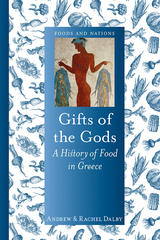
Greek food is brimming with thousands of years of history, lore, and culture. The country has one of the most varied landscapes of Europe, where steep mountains, low-lying plains, rocky islands, and crystal-blue seas jostle one another and produce food and wine of immense quality and distinctive taste. The book discusses how the land was settled, what was grown in different regions, and how certain fruits, herbs, and vegetables became a part of local cuisines. Moving through history—from classical to modern—the book explores the country’s regional food identities as well as the export of Greek food to communities all over the world. The book culminates with a look at one of the most distinctive features of Greece’s food tradition—the country’s world renown hospitality. Illustrated throughout and featuring traditional recipes that blend historical and modern flavors, Gifts of the Gods is a mouth-watering account of a rich and ancient cuisine.
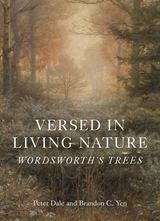
This is the first book to address William Wordsworth’s profound identification of the spirit of nature in trees. It looks at what trees meant to him, and how he represented them in his poetry and prose: the symbolic charm of blasted trees, a hawthorn at the heart of Irish folk belief, great oaks that embodied naval strength, yews that tell us about both longevity and the brevity of human life. Linking poetry and literary history with ecology, Versed in Living Nature explores intricate patterns of personal and local connections that enabled trees—as living things, cultural topics, horticultural objects, and even commodities—to be imagined, theorized, discussed, and exchanged. In this book, the literary past becomes the urgent present.

“You are, of course, never yourself,” wrote Gertrude Stein (1874–1946) in Everybody’s Autobiography. Modernist icon Stein wrote many pseudo-autobiographies, including the well-known story of her lover, The Autobiography of Alice B. Toklas;but in Lucy Daniel’s Gertrude Stein the pen is turned directly on Stein, revealing the many selves that composed her inspiring and captivating life.
Though American-born, Stein has been celebrated in many incarnations as the embodiment of French bohemia; she was a patron of modern art and writing, a gay icon, the coiner of the term “Lost Generation,” and the hostess of one of the most famous artistic salons. Welcomed into Stein’s art-covered living room were the likes of Picasso, Matisse, Hemingway, and Pound. But—perhaps because of the celebrated names who made up her social circle—Stein has remained one of the most recognizable and yet least-known of the twentieth-century’s major literary figures, despite her immense and varied body of work. With detailed reference to her writings, Stein’s own collected anecdotes, and even the many portraits painted of her, Lucy Daniel discusses how the legend of Gertrude Stein was created, both by herself and her admirers, and gives much-needed attention to the continuing significance and influence of Stein’s literary works.
A fresh and readable biography of one of the major Modernist writers, Gertrude Stein will appeal to a wide audience interested in Stein’s contributions to avant-garde writing, and twentieth century art and literature in general.

This book examines the factory in a number of incarnations; as image, as icon, as innovator and as laboratory. It traces the history of the modern factory from the utopian schemes of Robert Owen or Claude Ledoux in the early 19th century, through the great modernist "cathedrals of industry" of Peter Behrens, Albert Kahn and Frank Lloyd Wright, to the post-industrial revival of former factories, such as Renzo Piano’s reconstruction of the Fiat Lingotto factory in Turin, or the landscaped industrial parks created out of former steel mills in the Ruhr area of Germany.
This is the first book in the "Objekt" series, which will examine a wide range of iconic modern objects across many design fields, including architecture, industrial design, graphics and fashion. The books are not intended as exhaustive histories of their subject, but are written as thematic and discursive essays, keeping in mind the broader cultural meanings of objects or buildings as much as their intended functions in the modern period.
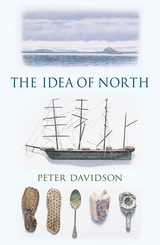
Tracing a northbound route from rural England—whose mild climate keeps it from being truly northern—to the wind-shorn highlands of Scotland, then through Scandinavia and into the desolate, icebound Arctic Circle, Davidson takes the reader on a journey from the heart of society to its most far-flung outposts. But we never fully leave civilization behind; rather, it is our companion on his alluring ramble through the north in art and story. Davidson presents a north that is haunted by Moomintrolls and the ghosts of long-lost Arctic explorers but at the same time, somehow, home to the fragile beauty of a Baltic midsummer evening. He sets the Icelandic Sagas, Nabokov's snowy fictional kingdom of Zembla, and Hans Christian Andersen's cryptic, forbidding Snow Queen alongside the works of such artists as Eric Ravilious, Ian Hamilton Finlay, and Andy Goldsworthy, demonstrating how each illuminates a different facet of humanity's relationship to the earth's most dangerous and austere terrain.
Through the lens of Davidson's easy erudition and astonishing range of reference, we come to see that the north is more a goal than a place, receding always before us, just over the horizon, past the last town, off the edge of the map. True north may be unreachable, but The Idea of North brings intrepid readers closer than ever before.
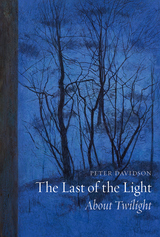

The Prefabricated Home outlines the methods and motives of prefabricated buildings and assesses their architectural implications. Davies traces the origins of the branded building phenomenon with examples ranging from the Dymaxion bathroom to IKEA's "Bo Klok" house. He also analyzes the use of industrialized buildings worldwide—including McDonald's drive-through restaurants and contrasts the aesthetic concerns of architects against the economic ones of industrialized building manufacturers. Ultimately, The Prefabricated Home proposes a partnership of architects and industrialized building that could potentially produce an exciting new type of humane and eco-conscious architecture.

In the two decades between its debut performance and the death of impresario Sergei Diaghilev in 1929, the Ballets Russes was an unrivalled sensation in Paris and around the world. But while scholarly attention has often centered on the links between Diaghilev’s troupe and modernist art and music, there has been surprisingly little analysis of the Ballets’ role in the area of tastemaking and trendsetting. Ballets Russes Style addresses this gap, revealing the extent of the ensemble’s influence in arenas of high style—including fashion, interior design, advertising, and the decorative arts.
In Ballets Russes Style, Mary E. Davis explores how the Ballets Russes performances were a laboratory for ambitious cultural experiments, often grounded in the aesthetic confrontation of Russian artists who traveled with the troupe from St. Petersburg—Bakst, Benois, and Stravinsky among them—and the Parisian avant-garde, including Picasso, Matisse, Derain, Satie, Debussy, and Ravel. She focuses on how the ensemble brought the stage and everyday life into direct contact, most noticeably in the world of fashion. The Ballets Russes and its audience played a key role in defining Paris style, which would echo in fashions throughout the century.
Beautifully illustrated, and drawing on unpublished images and memorabilia, this book illuminates the ways in which the troupe’s innovations in dance, music, and design mirrored and invigorated contemporary culture.

A composer who dabbled in the Dada movement, a Bohemian “gymnopédiste” of fin-de-siècle Montmartre, and a legendary dresser known as “The Velvet Gentleman,” Erik Satie cut a unique figure among early twentieth-century European composers. Yet his legacy has largely languished in the shadows of Stravinsky, Debussy, and Ravel. Mary E. Davis now brings Satie to life in this fascinating new biography.
Satie redefined the composer’s art, devising new methods of artistic expression that melded ordinary and rarified elements of words, visual art, and music. Davis argues that Satie’s modernist aesthetic was grounded in the contradictions of his life—such as enrolling in the conservative Schola Cantorum after working as a cabaret performer—and is reflected in his irreverent essays, drawn art, and music. Erik Satie explores how the composer was embraced by avant-garde artists and fashionable Parisian elite, and how his experiences inspired him to create the musical style of Neoclassicism. Satie also employed the power of the image through his infamous fashion statements, Davis contends, and became part of a nascent celebrity culture.
A cogent and informative portrait, Erik Satie upends the accepted history of modernist music and restores the composer to his rightful pioneering status.
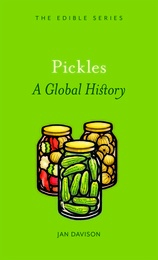
In Pickles, Jan Davison explores the cultural and gastronomic importance of pickles from the earliest civilizations’ brine-makers to twenty-first-century dilettantes of dill. Join Davison and discover the art of pickling as mastered by the ancient Chinese; find out why Korean astronaut Yi So-yeon took pickled cabbage into space in 2008; learn how the Japanese pickle the deadly puffer fish; and uncover the pickling provenance of that most popular of condiments, tomato ketchup. A compulsively consumable, globe-trotting tour sure to make you pucker, Davison’s book shows us how pickles have been omnipresent in humanity’s common quest not only to preserve foods, but to create them—with relish.
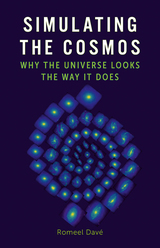
Simulating the Cosmos is a behind-the-scenes look at one of the hottest and fastest-moving areas of astrophysics today: simulations of cosmology and galaxy formation. Leading cosmologist Romeel Davé guides you through the trials and tribulations of what it takes to teach computers how galaxies form, the amazing insights revealed by cosmological simulations, and the many mysteries yet to be solved. This rollicking journey is a rare glimpse into science in action, showing how cosmologists are using supercomputers to uncover the secrets of how the universe came to be.
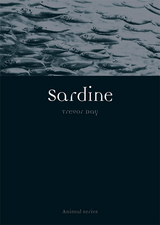
A wide-ranging look at the cluster of fish species called sardines, Day’s book explores their relationship both with other marine creatures and with us. Elite predators feast on sardines, yet these silvery slivers are fast-breeding and opportunistic enough to likely survive their hunters for many millennia to come. Whether swimming free as a shoaling fish at the mercy of predators, packed in tins (and as a metaphor for overcrowding), or grilled on the streets of Lisbon as part of the Feast of St. Anthony, sardines have come to represent conformity, vulnerability, and tradition. And as Day’s biography of this familiar but under-appreciated fish reveals, the sardine is a barometer for the health of our oceans, a fish with lessons for us all about our stewardship of the seas.

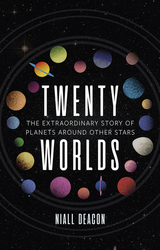
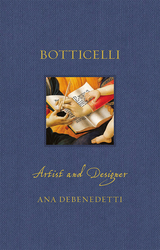
In this vivid account, Ana Debenedetti reexamines the life and work of Renaissance artist Sandro Botticelli through a novel lens: his business acumen. Focusing on the organization of Botticelli’s workshop and the commercial strategies he devised to make his way in Florence’s very competitive art market, Debenedetti looks with fresh eyes at the remarkable career and output of this pivotal artist within the wider context of Florentine society and culture. Uniquely, Debenedetti evaluates Botticelli’s celebrated works, like The Birth of Venus, alongside less familiar forms such as tapestry and embroidery, showing the breadth of the artist’s oeuvre and his talent as a designer across media.

Merchants of Style explores the accelerating convergence of art and fashion, looking at the interplay of artists and designers, and the role of institutions—both public and commercial—that have brought about this marriage of aesthetic industries. The book argues that one figure more than any other anticipated this moment: Andy Warhol. Beginning with an overview of art and fashion’s deeply entwined histories, and then picking up where Warhol left off, Merchants of Style tells the story of art’s emboldened forays into commerce and fashion’s growing embrace of art. As the two industries draw closer together than ever before, this book addresses urgent questions about what this union means and what the future holds.

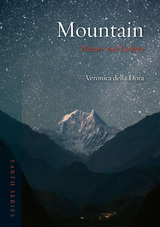
Veronica della Dora explores the ways mountains have functioned spiritually as a boundary between life and death, a bridge between the earth and the heavens. Interlacing science, culture, and religion, she sketches the mountain as a geological phenomenon that has profoundly influenced and been influenced by the human imagination, shaping our environmental consciousness and helping us understand our—quite small indeed—place in the world. She also explores their significance as objects of human feats, as prizes of adventure and sport, and as places of serene beauty for vacationers. Magnificently illustrated and showcasing famous peaks from all around the world, Mountain offers a fascinating dual portrait of these giants in nature and culture.
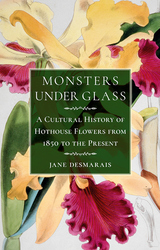
In a study as wide-ranging, vivid, and beautiful as our beloved exotic blooms themselves, Jane Desmarais charts the history and influence of these humid, tropical worlds and their creations, providing a steamy window onto our recent past.

Traveling to New Zealand for the Maori’s hangi, Hawaii for kalua pig, Mexico for barbacoa de cabeza, and Spain for a taste of bull roast, Barbecue looks at the incredible variety of the food around the world. Deutsch and Elias also discuss barbecue’s status as a masculine activity, the evolution of cooking techniques and barbecuing equipment technology, and the growth of competitive barbecuing in the United States. Rounding out the book are mouthwatering recipes, including an 1877 Minneapolis recipe for a whole roast sheep, a 1942 pork spare ribs recipe from the Ozarks, and instructions for tandoori lamb chops and Chinese roast duck. A celebration of all things smoky, meaty, and delicious, Barbecue makes the perfect gift for backyard grillers and professional roasters.



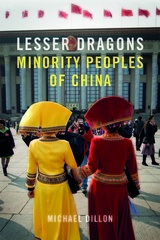

A spider spinning its web in a dark corner. Wasps building a nest under a roof. There’s hardly any part of the built environment that can’t be inhabited by nonhumans, and yet we are extremely selective about which animals we keep in or out. This book imagines new ways of thinking about architecture and the more-than-human and asks how we might design with animals and the other lives that share our spaces in mind. Animal Architecture is a provocative exploration of how to think about building in a world where humans and other animals are already entangled, whether we acknowledge it or not.

When we look at trees, we see a form of natural architecture, and yet we have seemingly always exploited trees to make new buildings of our own. Whereas a tree creates its own structure, humans generally destroy other things to build, with increasingly disastrous consequences. In Botanical Architecture, Paul Dobraszczyk looks closely at how elements of plants—seeds, roots, trunks, branches, leaves, flowers, and canopies—compare with and constitute human-made buildings.
Given the omnipresence of plant life in and around our structures, Dobraszczyk argues that we ought to build as much for plants as for ourselves, understanding that our lives are always totally dependent on theirs. Botanical Architecture offers a provocative and original take on the relationship between ecology and architecture.

Exploring a breathtaking range of imagined cities—submerged, floating, flying, vertical, underground, ruined, and salvaged—Future Cities teases out the links between speculation and reality, arguing that there is no clear separation between the two. In the Netherlands, prototype floating cities are already being built; Dubai’s recent skyscrapers resemble those of science-fiction cities of the past; while makeshift settlements built by the urban poor in the developing world are already like the dystopian cities of cyberpunk. Bringing together architecture, fiction, film, and visual art, Paul Dobraszczyk reconnects the imaginary city with the real, proposing a future for humanity that is firmly grounded in the present and in the diverse creative practices already at our fingertips.
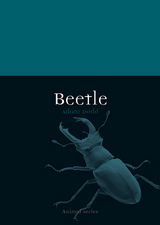

As Dodds reveals, ice has played a prominent role in shaping both the earth’s living communities and its geology. Throughout history, humans have had fun with it, battled over it, struggled with it, and made money from it—and every time we open our refrigerator doors, we’re reminded how ice has transformed our relationship with food. Our connection to ice has been captured in art, literature, movies, and television, as well as made manifest in sport and leisure. In our landscapes and seascapes, too, we find myriad reminders of ice’s chilly power, clues as to how our lakes, mountains, and coastlines have been indelibly shaped by the advance and retreat of ice and snow. Beautifully illustrated throughout, Ice is an informative, thought-provoking guide to a substance both cold and compelling.

Simple, healthy, and comforting, breakfast cereals are a perennially popular way to start the day. This book examines cereal’s long, distinguished, and surprising history—dating back to when, around 10,000 years ago, the agricultural revolution led people to break their fasts with wheat, rice, and corn porridges. Only in the second half of the nineteenth century did entrepreneurs and food reformers create the breakfast cereals we recognize today: Kellogg’s Corn Flakes, Cheerios, and Quaker Oats, among others. In this entertaining, well-illustrated account, Kathryn Cornell Dolan explores the history of breakfast cereals, including many historical and modern recipes that the reader can try at home.


Suspended between sea and sky, battered by the waves and the wind, lighthouses mark the battle lines between the elements. They guard the boundaries between the solid human world and the primordial chaos of the waters; between stability and instability; between the known and the unknown. As such, they have a strange, universal appeal that few other manmade structures possess.
Engineered to draw the gaze of sailors, lighthouses have likewise long attracted the attention of soldiers and saints, artists and poets, novelists and filmmakers, colonizers and migrants, and, today more than ever, heritage tourists and developers. Their evocative locations, isolation, and resilience, have turned these structures into complex metaphors, magnets for stories. This book explores the rich story of the lighthouse in the human imagination.


The French Revolution facilitated the rise of Napoleon Bonaparte, but after gaining power he knew that his first task was to end it. In this book William Doyle describes how he did so, beginning with the three large issues that had destabilized revolutionary France: war, religion, and monarchy. Doyle shows how, as First Consul of the Republic, Napoleon resolved these issues: first by winning the war, then by forging peace with the Church, and finally by making himself a monarch. Napoleon at Peace ends by discussing Napoleon’s one great failure—his attempt to restore the colonial empire destroyed by war and slave rebellion. By the time this endeavor was abandoned, the fragile peace with Great Britain had broken down, and the Napoleonic wars had begun.

Drenth describes the workings of the vagina in simple language, enriching his description throughout the book with the imagery, mythology, lore, and history that has surrounded the vagina since the Middle Ages. The Origin of the World moves from basic physiognomic facts to the realms of anthropology, art history, science fiction, and feminist literature-all in the service of mapping the dark continent. Drenth's journey takes him from Renaissance woodcuts to vibrators, clitoridectomies to "virginity checks," fears of the vagina (the vagina dentata) to its celebration. Part medical exposition covering the function of female genitalia from orgasm to pregnancy and part cultural history discussing contemporary and historical views of such aspects of the feminine as pubic hair, Freud's theories of coitus, and slang terms for the vagina, The Origin of the World is encyclopedic in its breadth, fascinating in its content, and familiar in its subject.
This lightly written exploration can be seen as both an owner's manual and a guide for the perplexed. Women and men alike will benefit from its entertaining erudition and from its fundamental mission of demystifying sex and sexuality in the service of greater understanding and, from that understanding, greater pleasure.
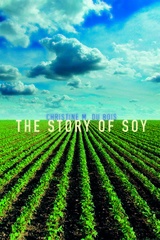
Traveling across the globe and through millennia, The Story of Soy includes a cast of fascinating characters as vast as the soy fields themselves—entities who’ve applauded, experimented with, or despised soy. From Neolithic villagers to Buddhist missionaries, European colonialists, Japanese soldiers, and Nazi strategists; from George Washington Carver to Henry Ford, Monsanto, and Greenpeace; from landless peasants to petroleum refiners, Du Bois explores soy subjects as diverse as its impact on international conflicts, its role in large-scale meat production and disaster relief, its troubling ecological impacts, and the nutritional controversies swirling around soy today. She also describes its genetic modification, the scandals and pirates involved in the international trade in soybeans, and the potential of soy as an intriguing renewable fuel. Featuring compelling historical and contemporary photographs, The Story of Soy is a potent reminder never to underestimate the importance of even the most unprepossesing sprout.

China in Seven Banquets takes readers on a gastronomic adventure into the history of China’s constantly evolving and astonishingly diverse cuisine. From the opulent Eight Treasures feast of ancient times to the Tang dynasty’s legendary “Tail-Burning” banquet, and the extravagant “complete Manchu-Han feast” of the Qing court, these iconic repasts offer glimpses into China’s rich food history. Delving further, the book invites us to partake of lavish banquets immortalized in literature and film, a New Year’s buffet from 1920s Shanghai, a modern delivery menu reflecting the hyperglobal present, and it even offers a peek at the tables of the not-so-distant future. Drawing upon his extensive gastronomic adventures across China, acclaimed historian Thomas David DuBois unravels its ever-changing landscape of culinary trends, revealing why flavors and customs evolved over time. DuBois also recreates dozens of traditional recipes using modern kitchen techniques. Whether indulging in fermented elk or savoring absinthe cocktails, readers embark on an unparalleled odyssey that redefines their perception of Chinese cuisine.
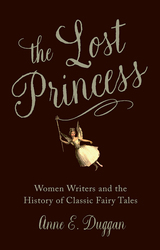
People often associate fairy tales with Disney films and with the male authors from whom Disney often drew inspiration—notably Charles Perrault, the Brothers Grimm, and Hans Christian Andersen. In these portrayals, the princess is a passive, compliant figure. By contrast, The Lost Princess shows that classic fairy tales such as “Cinderella,” “Rapunzel,” and “Beauty and the Beast” have a much richer, more complex history than Disney’s saccharine depictions. Anne E. Duggan recovers the voices of women writers such as Marie-Catherine d’Aulnoy, Marie-Jeanne L’Héritier, and Charlotte-Rose de La Force, who penned popular tales about ogre-killing, pregnant, cross-dressing, dynamic heroines who saved the day. This new history will appeal to anyone who wants to know more about the lost, plucky heroines of historic fairy tales.

Maps go far beyond just showing us where things are located. All Mapped Out is an exploration of how maps impact our lives on social and cultural levels. This book offers a journey through the fascinating history of maps, from ancient cave paintings and stone carvings to the digital interfaces we rely on today. But it’s not just about the maps themselves; it’s about the people behind them. All Mapped Out reveals how maps have affected societies, influenced politics and economies, impacted the environment, and even shaped our sense of personal identity. Mike Duggan uncovers the incredible power of maps to shape the world and the knowledge we consume, offering a unique and eye-opening perspective on the significance of maps in our daily lives.

Providing a global historical geography of cannabis, Duvall discusses the manufacture of hemp and its role in rope-making, clothing, and paper, as well as cannabis’s use as oil and fuel. His focus, though, is on its most prevalent use: as a psychoactive drug. Without advocating for either the prohibition or legalization of the drug, Duvall analyzes a wide range of works to offer a better understanding of both stances and, moreover, the diversity of human-cannabis relationships across the world. In doing so, he corrects the overly simplistic portrayals of cannabis that have dominated discourse on the subject, arguing that we need to understand the big picture in order to improve how the plant is managed worldwide. Richly illustrated and highly accessible, Cannabis is an essential read to understand the rapidly evolving debate over the legalization of marijuana in the United States and other countries.
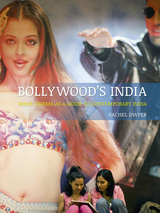
Showing how escapism and entertainment function in Bollywood cinema, Rachel Dwyer argues that Hindi cinema’s interpretations of India over the last two decades are a reliable guide to understanding the nation’s changing hopes and dreams. She looks at the ways Bollywood has imagined and portrayed the unity and diversity of the country—what it believes and feels, as well as life at home and in public. Using Dwyer’s two decades spent working with filmmakers and discussing movies with critics and moviegoers,Bollywood’s India is an illuminating look at Hindi cinema.
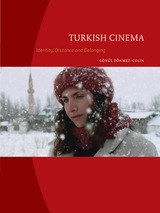

Dönmez-Colin examines prevalent cinematic archetypes, including the naïve country girl who is deceived and dishonored, or the devious seductress who destroys the sanctity of marriage, and looks well at controversial elements such as screen rape, which, feminist film critics claim, caters to male voyeurism. She also discusses recurring themes, such as the myths of femininity, the endorsement of polygamy and the obsession with male children, as well as the most common stereotypes, depicting women as mothers, wives and daughters.
Given the diversity of cultures, rather than viewing national cinemas as aspects of a single development, the author focuses on individual histories, traditions and social and economic circumstances as points of reference, which are examined in the context of social and political evolution and the status of women within Islam.
Women, Islam and Cinema is a much-needed and timely work that will appeal to the curious reader as well as to the student of film.
READERS
Browse our collection.
PUBLISHERS
See BiblioVault's publisher services.
STUDENT SERVICES
Files for college accessibility offices.
UChicago Accessibility Resources
home | accessibility | search | about | contact us
BiblioVault ® 2001 - 2024
The University of Chicago Press









